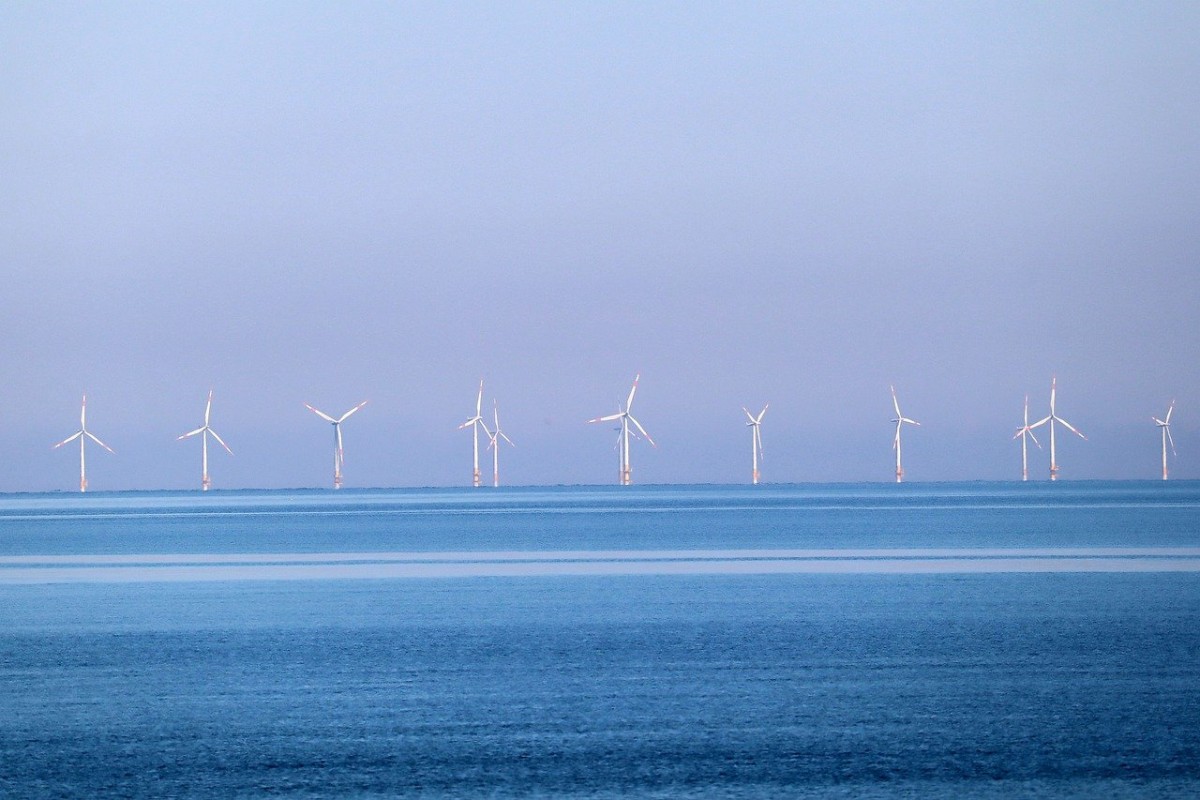
The ESB has formally announced its plans for the ‘Green Atlantic’ project at Moneypoint in West Clare.
The site is set to be transformed into a green energy hub, where a range of renewable technologies will be deployed over the next decade with the capacity to power 1.6 million homes
In line with the Government’s ambition of reaching net zero emissions by 2050, ESB has today announced Green Atlantic @ Moneypoint. Under the ambitious programme, ESB’s Moneypoint site in County Clare will be transformed into a green energy hub, helping Ireland to become a leader in green energy production.
‘Green Atlantic @ Moneypoint’ is a multi-billion Euro programme of significant investments on the site over the next decade resulting in hundreds of jobs, including;
Renewable enablement: ESB has already commenced work on transforming Moneypoint into a green energy hub, breaking ground on a new €50m Sustainable System Support facility in the coming weeks – this Synchronous Compensator will be the largest of its kind in the world. This new plant will provide a range of electrical services to the electricity grid which would previously have been supplied by thermal fired power stations. Its operation will enable higher volumes of renewables on the system.
Moneypoint Floating Offshore wind farm: A floating offshore wind farm of 1,400MW will be developed off the coast of Counties Clare and Kerry in two phases by ESB and joint venture partners, Equinor – a world leader in floating offshore wind technology. Once complete, the wind farm will be capable of powering more than 1.6m homes in Ireland. Subject to the appropriate consents being granted, the wind farm is expected to be in production within the next decade.

A wind turbine construction hub: Moneypoint will become a centre for the construction and assembly of floating wind turbines. A deep-water port already exists at the site, making it an ideal staging ground for the construction of the wind farm. It is expected this will generate a significant number of direct jobs in the Mid-West region. In the longer term, the development of Moneypoint will support wider plans of Shannon Foynes port, and working with local stakeholders, help make the Shannon Estuary a focal point for the offshore wind industry in Europe.
Hydrogen Energy: ESB’s plans include investment in a green hydrogen production, storage and generation facility at Moneypoint towards the end of the decade. A clean, zero-carbon fuel, green hydrogen will be produced from renewable energy and used for power generation, heavy goods vehicles in the transport sector and to help decarbonise a wide range of industries such as pharmaceuticals, electronics and cement manufacturing.
Pat O’Doherty, ESB Chief Executive, said: “ESB’s Brighter Future strategy is anchored in our ambition to lead the transition to a low-carbon energy future, powered by clean electricity. The transformation of Moneypoint into a green energy hub will be a major step in achieving this and will bring huge benefits to the Mid-West and beyond. We have long signaled our intention to cease burning coal at Moneypoint. Today we are unveiling plans for a reimagined Moneypoint, which will not only create hundreds of jobs, but will also help Ireland to meet its climate targets and maintain secure supplies of electricity into the future.”
Green Atlantic @ Moneypoint is a key part of ESB’s Brighter Future strategy and will contribute significantly to achieving the Government’s target of a 51% reduction in emissions by 2030.
Jim Dollard, ESB Executive Director, Generation and Trading, said: “Today’s announcement is a significant milestone in ESB’s low-carbon journey, cementing our commitment to transforming our generation portfolio and ongoing investment in renewable energy technologies. Moneypoint has played a critical role in the country’s energy supply for almost 40 years. We are proud that it will continue to have a crucial role in Ireland’s energy future with many benefits for the local community and wider society.”
Fianna Fáil Seanad Spokesperson on Climate Action, Clare Senator Timmy Dooley, has welcomed the announcement today by the ESB that it is set to develop a Major Renewables Hub on the coast of Clare at the Moneypoint site.
In line with the Government’s ambition of reaching net zero emissions by 2050, ESB announced Green Atlantic @ Moneypoint. Under the ambitious programme, ESB’s Moneypoint site will be transformed into a green energy hub, helping Ireland to become a leader in green energy production.

Welcoming the announcement, Senator Dooley commented, “Green Atlantic @ Moneypoint is a multi-billion euro programme of significant investments on the site over the next decade resulting in hundreds of jobs.
“This is only a taste of what’s in store, which will be transformational for not just the Clare area but the wider region and Ireland generally. We’ve got amongst the best winds in the world off the Atlantic seaboard here but what this announcement shows is that we now have the technology to capitalise on this.
“The bigger picture, however, is that we have an almost limitless supply of that wind energy offshore, up to 70,000 megawatts according to a report by Shannon Foynes Port Company last December. That means Ireland has an unprecedented opportunity to not just deliver and surpass its own climate change targets but to become a major producer of hydrogen, a fuel made from renewable resources, for global export of renewable energy” concluded Senator Dooley.
About ESB
ESB operates across the electricity market; from generation, through transmission and distribution to the supply of customers with an expanding presence in the GB generation market. In addition, we extract further value through supplying gas and energy services and using our networks to carry fibre for telecommunications. ESB is the owner of the distribution and transmission networks in the Republic of Ireland (managed by ESB Networks) and Northern Ireland (via Northern Ireland Electricity Networks Ltd).
In 2020 ESB had a 29% share of generation in the all-island market (via ESB Generation and Trading) and a 34% share of electricity supply in the all-island market (via Electric Ireland) with 1.5 million customer accounts.
About Moneypoint
At its peak, Moneypoint produced 25% of Ireland’s electricity requirements. Built in the 1980s as a response to problems in acquiring oil supplies, Moneypoint primarily burns coal and has provided continuity of supply and energy security for the country for almost 40 years.
Strategic importance of Moneypoint port
Moneypoint is one of the deepest ports in Europe. This is an essential element of the project, as the ships used to deliver wind turbines need to dock in a deep-water port. The presence of the deep-water port at this facility also allows for wind turbines to be brought back on shore for service and maintenance as required. Finally, the deep-water port will allow easy access for ships which will be used to export hydrogen to Europe.
More about Green Hydrogen
Decarbonising our electricity network and achieving Ireland’s goal of net carbon zero by 2050 requires the large-scale development of green hydrogen from renewable sources. Green hydrogen is required to transform industries where direct electrification is not feasible such as heavy transport, shipping, industrial processes and back-up power generation. When wind farms produce more electricity than we can use, the excess renewable electricity can be converted into hydrogen – without producing greenhouse gas emissions – and stored as a fuel to be used later for when wind isn’t blowing. Hydrogen produced from renewable electricity is called green hydrogen.
About Sustainable System Support facility
The Sustainable System Support facility is a Synchronous Compensator which will enable the system operator to manage the transmission system safely and securely with a reduced dispatch of fossil fuel plant under constraints. This enables reduced carbon impact of transmission operations and reduced constraint costs.
The technology will be developed hand in hand with our ever-expanding renewable fleet supporting their introduction even in remote locations. As renewable penetration increases, existing large units are finding it increasingly challenging to remain environmentally, technically and economically operational. Synchronous Compensators insulates the grid from shutdown of conventional plant arising from the increased penetration of renewables.
ESB existing offshore wind farm portfolio
In 2019, ESB announced a partnership with Parkwind for the development of the Oriel and Clogherhead wind farms off the east coast of Ireland. More information here.
ESB entered into a key strategic partnering agreement with Equinor in 2019 to co-develop a number of offshore wind assets in Ireland and currently has five offshore windfarms in development. More information here. This builds on the ESB’s acquisition of a stake in the Galloper windfarm in 2018 (More information here) and the 50% shareholding in the Neart na Gaoithe 448 MW offshore wind farm project, located off the east coast of Scotland. (More information here).
In October 2020, ESB joined with Edinburgh-based Red Rock Power Limited to form a 50:50 joint venture for Inch Cape Offshore Limited, a large wind farm development off the east coast of Scotland. More information here.
